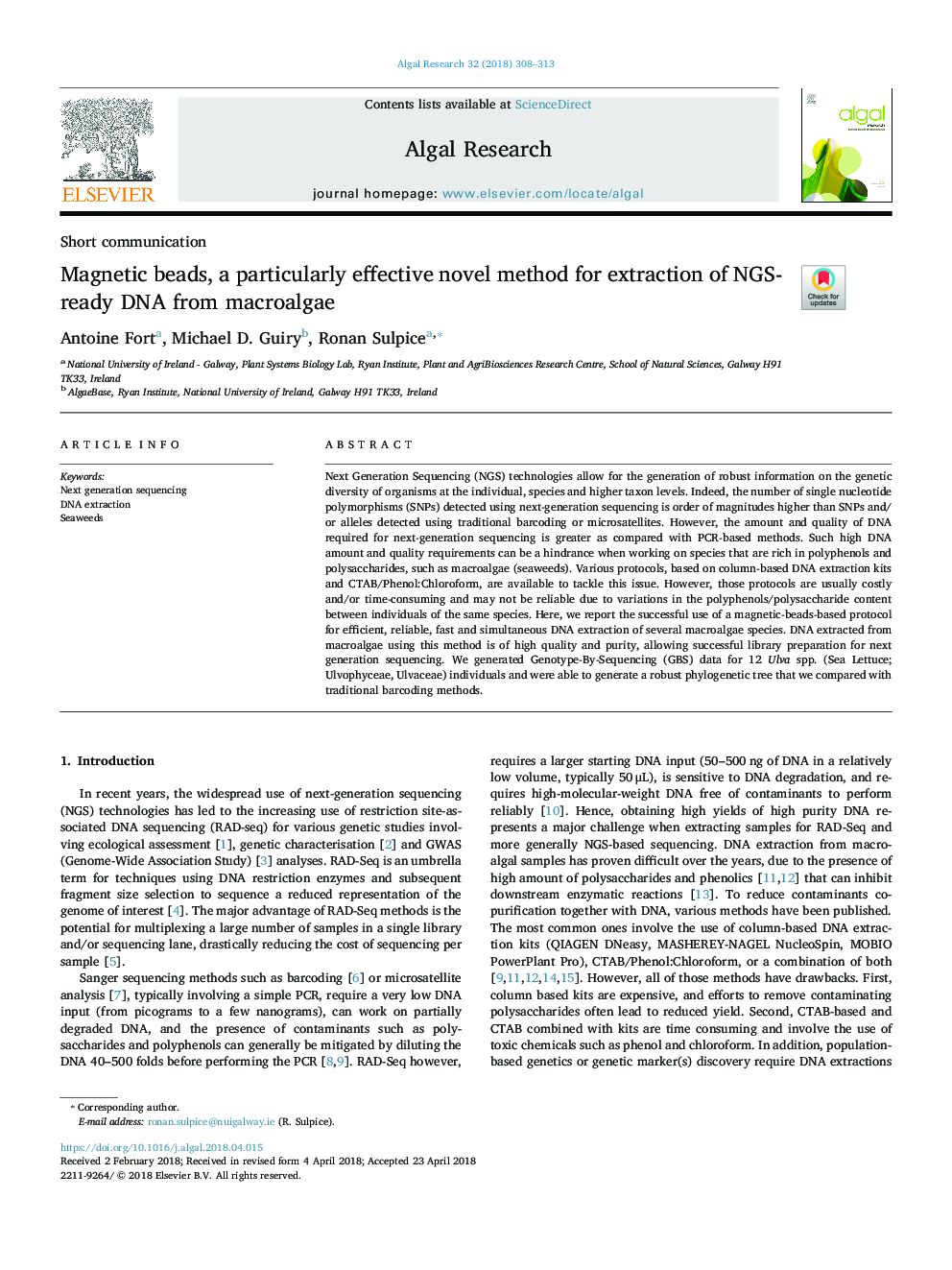| Article ID | Journal | Published Year | Pages | File Type |
|---|---|---|---|---|
| 8085756 | Algal Research | 2018 | 6 Pages |
Abstract
Next Generation Sequencing (NGS) technologies allow for the generation of robust information on the genetic diversity of organisms at the individual, species and higher taxon levels. Indeed, the number of single nucleotide polymorphisms (SNPs) detected using next-generation sequencing is order of magnitudes higher than SNPs and/or alleles detected using traditional barcoding or microsatellites. However, the amount and quality of DNA required for next-generation sequencing is greater as compared with PCR-based methods. Such high DNA amount and quality requirements can be a hindrance when working on species that are rich in polyphenols and polysaccharides, such as macroalgae (seaweeds). Various protocols, based on column-based DNA extraction kits and CTAB/Phenol:Chloroform, are available to tackle this issue. However, those protocols are usually costly and/or time-consuming and may not be reliable due to variations in the polyphenols/polysaccharide content between individuals of the same species. Here, we report the successful use of a magnetic-beads-based protocol for efficient, reliable, fast and simultaneous DNA extraction of several macroalgae species. DNA extracted from macroalgae using this method is of high quality and purity, allowing successful library preparation for next generation sequencing. We generated Genotype-By-Sequencing (GBS) data for 12 Ulva spp. (Sea Lettuce; Ulvophyceae, Ulvaceae) individuals and were able to generate a robust phylogenetic tree that we compared with traditional barcoding methods.
Related Topics
Physical Sciences and Engineering
Energy
Renewable Energy, Sustainability and the Environment
Authors
Antoine Fort, Michael D. Guiry, Ronan Sulpice,
